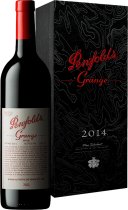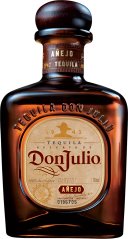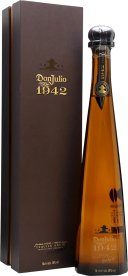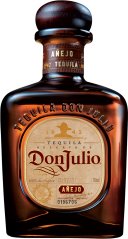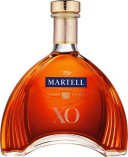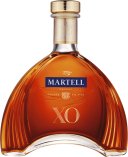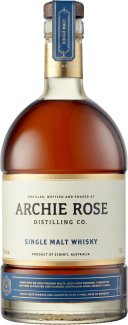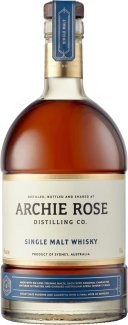$100 and over
Penfolds Grange
Unmistakably, Grange, this 2012 vintage is complex, flamboyant and lifted. An aromatic multi-cultural characteristics. The earthiness is well integrated with the aromas of dark fruits, grounded coffee, red liquorice and black olives, which leads to a firmly structured finish.
Nikka Yoichi Single Malt Japanese Whisky
Yoichi Single Malt is described as bold and strong. Pleasant peaty notes and smokiness originate from traditional direct coal-fired distillation accented with a briny hint delivered by the sea breeze during the ageing process.
Don Julio Añejo Tequila
A testament to Don Julios patience and determination for superior quality, Tequila Don Julio Añejo is the culmination of distinct rich flavours of agave balanced with the perfect amount of wood influence. Don Julio Añejo spends more than the minimum requirement of 1 year on oak, and is normally aged between 18 months and two years before it reaches its optimum age and taste profile. As with the rest of the Don Julio range the nose is fruity and floral, but with notes of vanilla and fresh agave, whilst the palate is slightly richer and more full bodied, yet still sweet and rich with citrus characteristics.
Martell XO Cognac
From the oldest house in Cognac, Martell XO is often overlooked for more commercial counterparts. Those in the know realise that with such a great history and cellar-stock to draw upon, this is one of the most complex, well-made Cognacs produced in the great region.
Oban 14 Year Old Scotch Whisky
A beautiful Scotch showing a magnificent balance between malt and peat. Aged for 14 years, slightly longer than most at the same price point, Oban is a whisky for those who love their Scotch's rich, smooth and intense.
Penfolds Bin 95 Grange Shiraz (Gift Boxed)
Penfolds has been a pioneer in the world of winemaking since its establishment in 1844 by Dr. Christopher and Mary Penfold. The company's success has been driven by a lineage of visionary winemakers who have pushed the development of the company to extraordinary, bold new heights. Mary Penfold's reign at the helm of Penfolds saw years of determination and endeavour, experimenting with new methods in wine production. In 1948, Max Schubert became the company's first Chief Winemaker and he propelled Penfolds onto the global stage with his experimentation of long-lasting wines - the creation of Penfolds Grange in the 1950s. Soon, the medals began flowing, and Grange quickly became one of the most revered wines around the world. In 2012, Penfolds released its most innovative project to date - 12 handcrafted ampoules of the rare 2004 Kalimna Block Cabernet Sauvignon. Today, Penfolds continues to hold dear the philosophies and legends that have driven the company's success since its establishment in 1844. Penfold's Grange is Australia's most revered wine, and its creation represents a distillation of Max Schubert's ambition for Australian wine. Schubert joined Penfolds as a messenger boy in 1931 and by 1948, he became Penfolds' first Chief Winemaker. In the latter part of 1950, Schubert was sent to Europe to investigate winemaking practices in Spain and Portugal. On a side trip to Bordeaux, Schubert was inspired and impressed by the French cellared-style wines and dreamed of making 'something different and lasting' of his own. Combining traditional Australian techniques, inspiration from Europe and precision winemaking practices developed at Penfolds, Schubert made his first experimental wine in 1951. In 1957, Schubert was asked to show his efforts in Sydney to top management, invited wine identities and personal friends of the board. To his horror, the Grange experiment was universally disliked and Schubert was ordered to shut down the project. Max continued to craft his Grange vintages in secret, hiding three vintages '57, '58 and '59, in the depths of the cellars. Eventually, the Penfolds board ordered production of Grange to restart, just in time for the 1960 vintage. From then on, international acknowledgment and awards were bestowed on Grange, including the 1990 vintage of Grange, which was named Wine Spectator's Red Wine of the Year in 1995. Today, Grange's reputation as one of the world's most celebrated wines continues to grow. On its 50th birthday in 2001, Grange was listed as a South Australian heritage icon, while the 2008 Grange vintage achieved a perfect score of 100 points by two of the world's most influential wine magazines. With every new generation of Penfolds winemakers, Max Schubert's remarkable vision is nurtured and strengthened. Penfolds Bin 95 Grange Shiraz is the benchmark by which all other reds in Australia and overseas are often measured. This wine has many reasons for its success, including concentration of flavour, complexity and longevity. Grange blossoms with 15 to 20 years of bottle age, when most other reds have passed their best and better vintages can live and continue developing for decades longer. The Penfolds Bin 95 Grange Shiraz 2019 is deep, dark and bright, the nose is automatically recognisable - formic and glacial higher notes - not quite as audacious as a fleeting perception of heady spirit (a la Cognac), and yet not just simple. Beneath, a more familial oaked nuttiness (hazelnut?) recedes to reveal aromas of black licorice/anise/black olive. A shroud of condensed glazed fruits surrenders to reveal a fresher disposition...a coulis of berries and stone fruits; boiled beetroot. Unsurprisingly wafts of coffee-grind, pan-scrapings/jus also ascend, hovering over a persistent base of cold lamb fat and marrow. Upon sitting, a sprinkle of lavender and exotic spices almost completes the aromatic package - well, at least for another minute or two. And then... Early days. On the palate there is cohesion, vigour, sheen, poise - four borders of a frame that structurally binds the lofty palate ambitions of this South Australian blend. Fresh and balanced. Neither exaggerated nor over-ripe - lively blueberry and other youthful blue/black fruits bely the maturation timeline of this alluring blend. Certainly befitting this style, unmistakable barrel-ferment characters are undoubtedly more pronounced on palate than nose. If the mid-palate is somewhat formidable (ably supporting a thick/dense core), by contrast the back-palate is creamy and caressingly endearing. Indeed, expansive and full-washing away all ahead of it. Certainly persistent. Texturally, chewy/grainy tannins and just-right acidity abet succulence and mouthfeel. Effortlessly handles 19 months in 100% new oak. Peak drinking 2029-2065.
Archie Rose Distilling Co Single Malt Australian Whisky
Archie Rose Single Malt Whisky is distinctly crafted to highlight six malts, each with a unique profile and character. This six-malt mash bill, although incredibly low yielding, provides a rich and expressive flavour, full of distinct regional character.Matured predominantly in 100, 200 and 300-litre Australian Apera (Sherry) casks, complemented by a selection of Ex-Bourbon and Archie Roses own 36-month air dried Ex-Rye Casks, each coopered with a specific balance of both char and toast.The natural sweetness of these casks complements the savoury charisma of the spirit, revealing fresh herbs, shortbread biscuits, raisins, toffee and dark chocolate on the nose. Meanwhile, the palate is luscious with well-integrated flavours of sticky date pudding and amaretto with a final note of espresso.
Chivas Regal 18 Year Old Blended Scotch Whisky
In 1950, Chivas Brothers began the search for a secure supply of exceptional malt whisky. Strathisla Distillery in Keith, the oldest and most beautiful distillery in the Highlands, was the obvious choice. From that day to this, the world-famous Strathisla Single Malt Scotch whisky became the foundation of the Chivas blend. The international reputation of Chivas Regal has been built upon this distillery and the skill of successive generations of Master Blenders. Legally, a blended Scotch whisky must contain both single malt Scotch whiskies and single grain Scotch whiskies. Chivas Regal 12 and 18 year old whiskies are blended using a special process called triple blending. First of all, the selected single malts are blended together. The second stage sees the selected single grains blended together, and then thirdly, the vatted malts and the vatted grains are brought together. These spirits are each married in selected oak casks for an extended period of maturation in order to produce an exceptionally smooth, rich whisky. 'The smooth taste of Chivas Regal 18 Year Old reflects the traditional style of blended Scotch whiskies with a powerful array of rich, fruity aromas, and a defined smokiness that develops into a long and memorable finish.' So says Colin Scott , Master Blender of Chivas. Colin hand-picks each whisky designated for Chivas Regal 18 Year Old from the distilleries most precious stock - including certain whiskies that are now exceedingly rare. Winner of three major awards, each bottle of Chivas Regal 18 Year Old bears its own unique serial number, sourcing it back to the one particular triple blending. And because only selected casks are matured to such a great age, the quantity of Chivas 18 Year Old produced every year is always strictly limited. Tasting notes: Brassy gold appearance. Bubblegum / marshmallow opening is a little bourbonesque. Second pass reveals vanilla and biscuity malt with a judicious slather of peat. The palate combines a silky mouthfeel with solid concentration - nothing like the comparatively beige 12 Year Old - delicate spices, biscuity, honeyed grains with hints of dried fruits. The finish is crisp with a lingering confectionary note. 40% Alc./Vol.



























